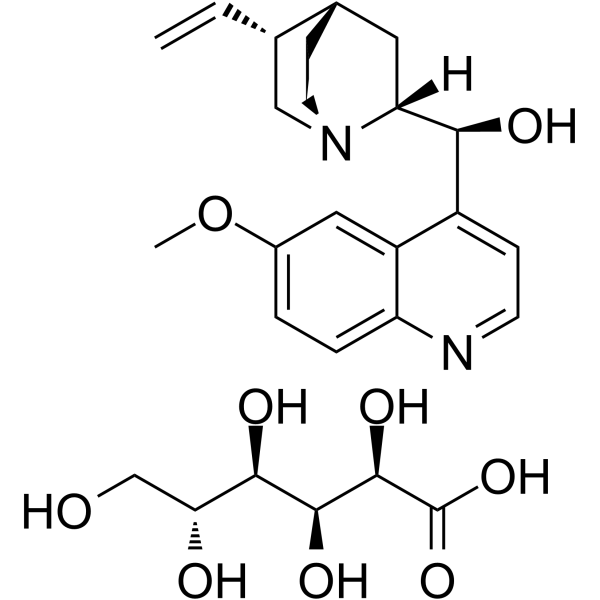Disposition of 3-hydroxyquinidine in patients receiving initial intravenous quinidine gluconate for electrophysiology testing of ventricular tachycardia.
B H Ackerman, K M Olsen, E E Kennedy, E H Taylor, B H Chen, D Jordan, D J Ackerman
Index: DICP 23(5) , 375-8, (1989)
Full Text: HTML
Abstract
The formation rate constant and elimination rate constant for 3-hydroxyquinidine were determined in eight patients with ventricular tachycardia. These two parameters (mean +/- SD) were found to be 0.784 +/- 0.202 and 0.042 +/- 0.058 h-1, respectively. Coefficients of determination for the computer-generated line of best fit for serum concentration-time data were 0.986 +/- 0.008. Patients received two infusions of quinidine gluconate 5 mg/kg over 30 minutes separated by a 20-30 minute electrophysiologic testing period. Unbound and total 3-hydroxyquinidine concentrations were also determined. Among the eight patients, 3-hydroxyquinidine was 61.9 percent bound. Studies in healthy volunteers had shown 50 percent binding. Linear regression of unbound and total 3-hydroxyquinidine was described by the equation Y = 0.3814X-1.448, r = 0.813. Although half-lives of 3.5-12.4 hours had been reported in healthy volunteers, prolonged half-lives were observed in all but two of our arrhythmia patients.
Related Compounds
| Structure | Name/CAS No. | Molecular Formula | Articles |
|---|---|---|---|
 |
quinidine gluconate
CAS:7054-25-3 |
C26H36N2O9 |
|
Quinidine-induced rheumatic syndromes.
1995-04-01 [Semin. Arthritis Rheum. 24(5) , 315-22, (1995)] |
|
Transfusion-transmitted malaria in a kidney transplant recip...
2008-02-01 [Saudi Med. J. 29(2) , 293-5, (2008)] |
|
Prospective comparison of intravenous quinidine and intraven...
1998-07-01 [Am. Heart J. 136(1) , 49-56, (1998)] |
|
Effect of dietary fat content on the bioavailability of a su...
1990-01-01 [Biopharm. Drug Dispos. 11(1) , 17-29, (1990)] |
|
A 21-year-old woman from Africa with fever, anemia, and jaun...
2006-02-01 [J. Emerg. Nurs. 32(1) , 51-3, (2006)] |